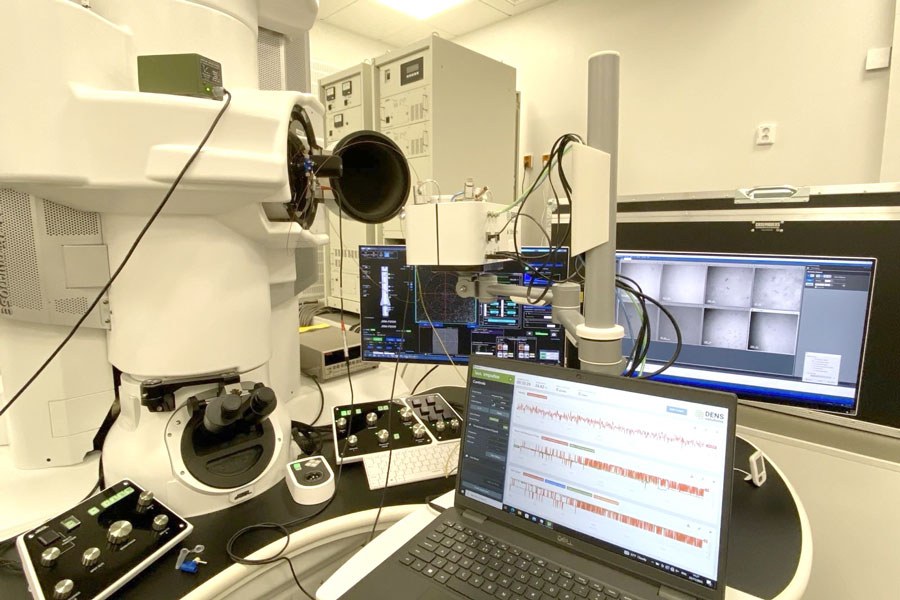Samples can now be imaged also in liquid - Microscopy Center the first in Finland to use the new sample holders

Dry samples can be studied with the transmission electron microscope (TEM) at atomic scale resolution. There is a high vacuum inside the TEM, and it is not possible to study liquid phases with conventional sample holders. The newly acquired liquid-cell holder is a significant step forward in visualizing nanoscale materials in their native environment. The TAU investment program has enabled the procurement of the DENSsolutions holder system.
"This new state-of-the-art sample system enables imaging of the samples in a flowing or stationary liquid. The sample can also be heated during imaging. This offers completely new approaches to material characterization. Imaging with the liquid-cell holder is very challenging, and its routine use takes time," says the head of the Tampere Microscopy Center, Professor Minnamari Vippola.
"The liquid-cell holder opens entirely new possibilities for visualizing the nanoparticles, cells, viruses, and other biological processes in their native environment, continues Associate Professor (tenure track)," the head of the Precision Nanomaterials group Nonappa.
Today, many nanomaterial syntheses are carried out in liquid environments with controlled parameters. The liquid cell holders allow highly controlled environmental conditions, including more than 100 different solvents, flow rate, temperature, and electrical biasing. Therefore, some of the most challenging phenomena can be visualized at the nanoscale in real-time. Some of the applications include in-situ nanoparticle formation, electrochemistry, corrosion studies, self-assembly, and nanoparticle-cell interactions.

New possibilities also for magnetic materials research
The Hall-effect sensor holder, which can be used to measure magnetic field strengths inside the TEM, is another novelty at the Tampere Microscopy Center. The sample holder has been designed and manufactured in the project ”Magnetic Barkhausen Noise: From the Fundamentals of Physics to Non-destructive Testing (BarFume)” funded by Research Council of Finland. The manufacturer was the project's industrial partner Stresstech Oy and the TAU's BarFume team and the TEM supplier JEOL also participated in the design of the holder. An article on the sample holder and its applications “Magnetic domain wall dynamics studied by in-situ Lorentz microscopy with aid of custom-made Hall-effect sensor holder” has been just published in Ultramicroscopy.
The intensity of the external magnetic field can be varied in the TEM and, at the same time image the movement of the magnetic domain walls. The new sample holder can be used to determine how high the magnetic field strength is when the walls start to move.
"This information is used, for example, when studying Barkhausen noise-based testing method with TEM. This non-destructive Barkhausen noise measurement is based on the motion of magnetic domain walls. It is utilized, for example, in the quality control of ground components of vehicles and gears of wind turbines," says Mari Honkanen, PI of the BarFume consortium and Senior Scientist of Microscopy Center.

Lisätiedot





